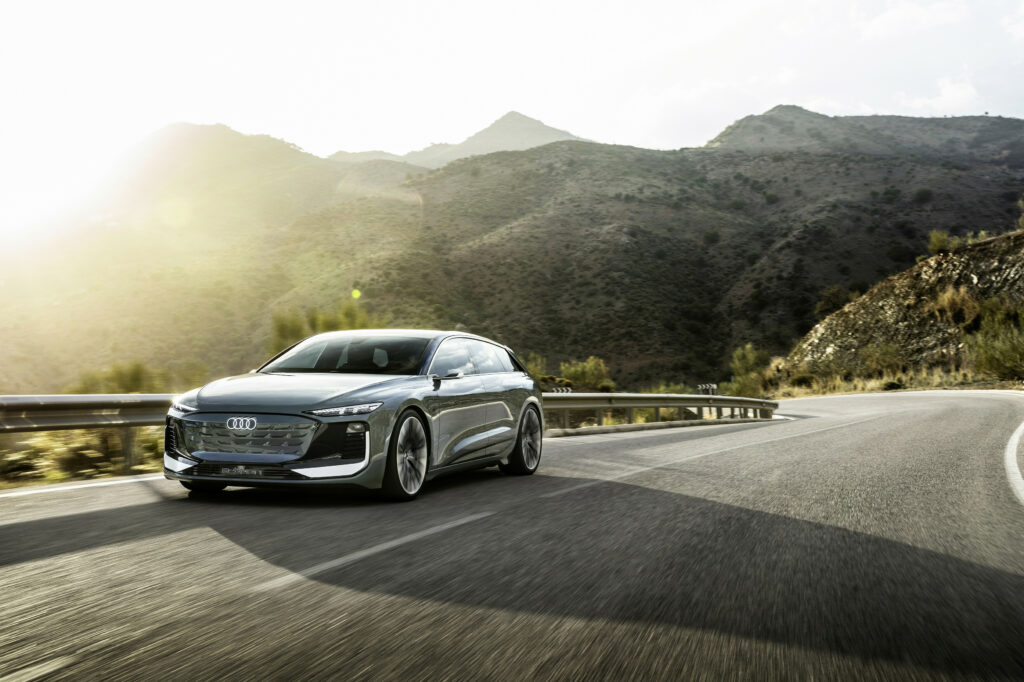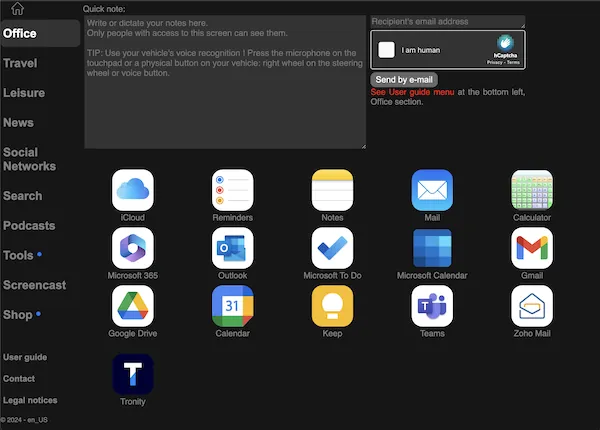
Soteria Battery Innovation Group, together with a consortium of more than 110 organisations, is making available new separator and current collector technologies that protect battery cells from the effects of internal short-circuits (writes Peter Donaldson). The consortium members include NASA, Mercedes-Benz, Lenovo, DuPont, Bosch and Motorola. As European consortium director Dr Juergen Kellner explains, “We […] More…
Category: E-Mobility Engineering
Audi unveils its PPE-based Avant e-tron

Audi has unveiled the next model concept in its electrically powered A6 class: the Avant e-tron. Its electric drive system is based on the Premium Platform Electric (PPE) platform developed by Audi and Porsche. The 800 V system has a charging capacity of 270 kW and gives a WLTP-standard range of up to 700 km. […] More…
Lightyear One

Ray of sunshine Rory Jackson explains how this aerodynamic five-seater has been designed for daily trips purely on solar power While EV technology has come a long way over the past decade, the main concerns being raised by engineers, advocates and prospective customers of battery EVs remain the same. Range anxiety broadly encapsulates these problems, […] More…
DC-DC converters for EVs with IP67 option

Green Watt Power, a division of Powerland Technology, has launched its EVD3000 series of fully encapsulated, ruggedised DC-DC converters for EVs. They have an input range of 280 to 880 V, with output voltages of 27.5 or 48 V DC to power auxiliary EV functions such as air conditioning, lights, instruments, accessories, or to provide […] More…
High-speed marine motor addresses critical need

Rapid acceleration may not be the first thing that comes to mind when considering marine vehicles that serve the offshore industries, but it is important because it increases their operational limits, enabling them to be deployed for longer in higher sea states (writes Peter Donaldson). That is one of the key selling points of Walker […] More…
CSM launches split HV measurement modules for confined spaces

CSM has unveiled its latest measurement technology solution for electric and hybrid vehicles where installation space is limited. Called the HV Breakout Module (BM) Split system, it provides high-frequency measurement of current, voltage and power directly in HV power cables as well as busbars. The split design allow measurements at points where there is not […] More…
Allan Paterson

On the home straight Britishvolt’s head of r&d tells Rory Jackson how his experience in battery cell technology has led to him being involved in setting up the UK’s first gigafactory In high-tech industries such as the EV world, supply chain resilience is now regarded as a strategic imperative, and many nations now push for […] More…
Making the cases for battery transport

As the EV industry grows, the logistics of moving major components – particularly batteries – between facilities has to be closely considered, argues Olivier Saada, business development manager for containers at battery transport packaging specialist Corplex (writes Peter Donaldson). EV batteries are considered dangerous goods and fragile items, and the company makes cases that are […] More…
Wireless charging by magnetic induction

Andy Daga, founder, president and CEO of Momentum Dynamics, wants to make charging EVs easier than refuelling IC-engine vehicles while enabling practically unlimited range in day-to-day driving, at least in urban and suburban environments (writes Peter Donaldson). The company is now rolling out its wireless charging system based on magnetic induction technology for large vehicles […] More…
Switching

Switching is at the heart of the electrical systems for e-mobility platforms. The performance of the switching devices – the transistors – determines the power levels, the efficiency and even the size of the systems. Switching at higher frequencies reduces the size of the magnetics and allows more integration, lower weights and longer range More…
Cool SiC inverters move

Researchers at the US National Renewable Energy Laboratory (NREL) have been working with heavy-duty equipment maker John Deere on a new thermal management system for SiC inverters (writes Nick Flaherty). Equipment such as trucks and construction machines account for 39% of greenhouse gas emissions in the transportation sector, so there has been a focus on […] More…
Webasto swappable batteries power Staad electrified excavators

With many European cities now insisting that machinery such as excavators used on construction sites must not produce harmful emissions, the pressure on the industry to electrify them is growing (writes Peter Donaldson). In 2020, Staad, the Dutch importer of Doosan machinery, formed its Electric Construction Equipment (ECE) division to convert excavators and now offers […] More…
Meeting the challenges of developing e-VTOL air taxis

AutoFlight’s Prosperity I, a Chinese-designed e-VTOL air taxi sized to accommodate a pilot and three passengers, is intended to meet the rigorous safety standards that apply to transport-category aircraft including the largest airliners, and the company is aiming for certification and service entry in 2025 (writes Peter Donaldson). Invited by electric aviation pioneer and AutoFlight’s […] More…
A case of plastic over aluminium

Containing thermal runaway, protecting EV occupants from fire and saving weight are all drivers for the application of new materials to batteries, and the battery case is a prime target for replacing aluminium alloy with plastics (writes Peter Donaldson). Multi-industry plastics specialist SABIC has recently re-engineered existing EV battery cases in two proof-of-concept exercises that […] More…
Fast charge ahead for BMW vehicles

Sprint Power is leading the development of an 800 V fast-charging system for BMW (writes Nick Flaherty). The Celeritas project is a £9.7 million effort to develop fast-charging cells and battery packs for battery EVs and fuel cell hybrid EVs. As well as BMW, its members include the UK’s Advanced Propulsion Centre, BP, AMTE […] More…
Dual-component power converter

Premo has developed an 11 kW power converter using its patented technology that integrates multiple magnetic components (writes Nick Flaherty). The 3DP-11KWHVHV combines a full-bridge 150 µH LLC resonant transformer and 25 µH resonant choke in a single unit. This cuts the volume of the converter by up to half, and can reduce the amount of […] More…
Lithium-metal cell packs a punch

With a specific energy of 400 Wh/kg and an energy density of between 700 and 810 Wh/litre, Sion Power’s Licerion-EV rechargeable lithium-metal cells are attracting great interest from EV developers, and the company is in discussion with multiple OEMs to further the development of the technology (writes Peter Donaldson). The company’s senior applications engineer […] More…
Koenigsegg Automotive AB

Koenigsegg has unveiled its first e-motor, the Quark, which uses a torque/power-rich balance between radial (power-dense) and axial (torque-dense) flux topology it calls Raxial Flux. The company has also integrated two of them with one of its David inverters, plus planetary gearsets, to create a torque-vectoring EV drive unit it calls the Terrier. The company says a key […] More…
Inverter integration cuts size, weight

Texas Instruments has integrated a transformer into a gate driver to enable distributed switch architectures for inverters (writes Nick Flaherty). The UCC14240-Q1 isolated DC-DC bias supply module integrates the transformer and components with 3.5 mm-high planar magnetics to reduce the size, height and weight of a distributed power system in an inverter. The integration of […] More…
48 V systems

Potential difference Moving to power distribution networks running on 48 V looks set to confer a range of benefits to battery-electric vehicles. Nick Flaherty reports Technology based on 48 V has been adopted for electric motors and battery packs to reduce emissions in mild hybrid vehicles, but changing regulations are seeing even those being banned […] More…

